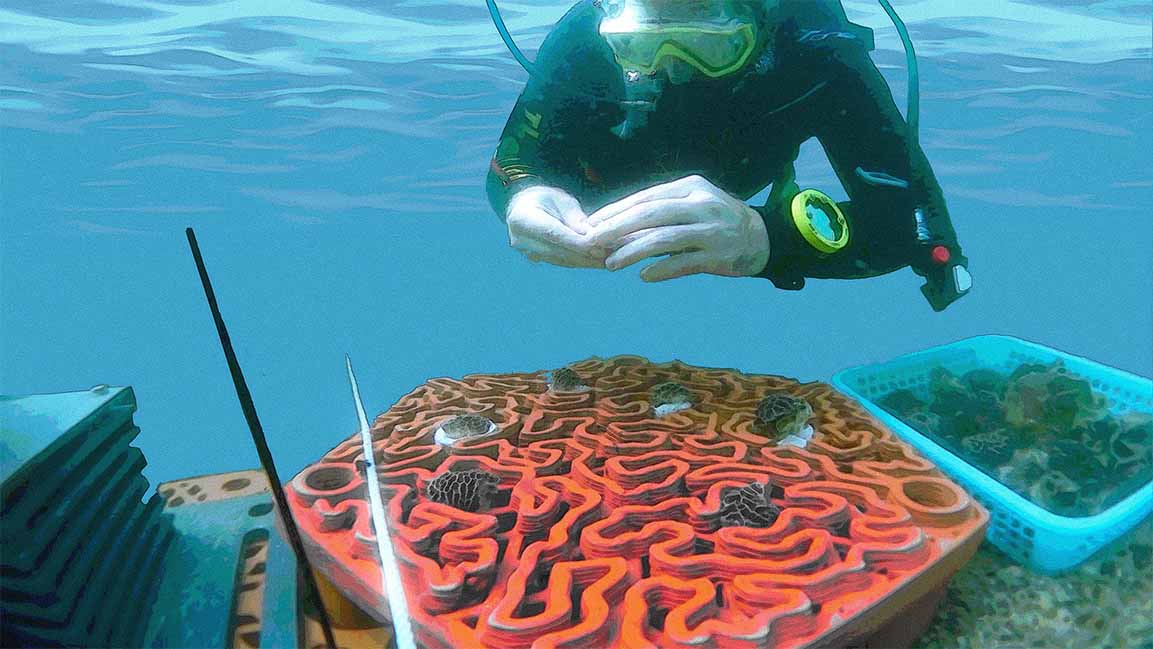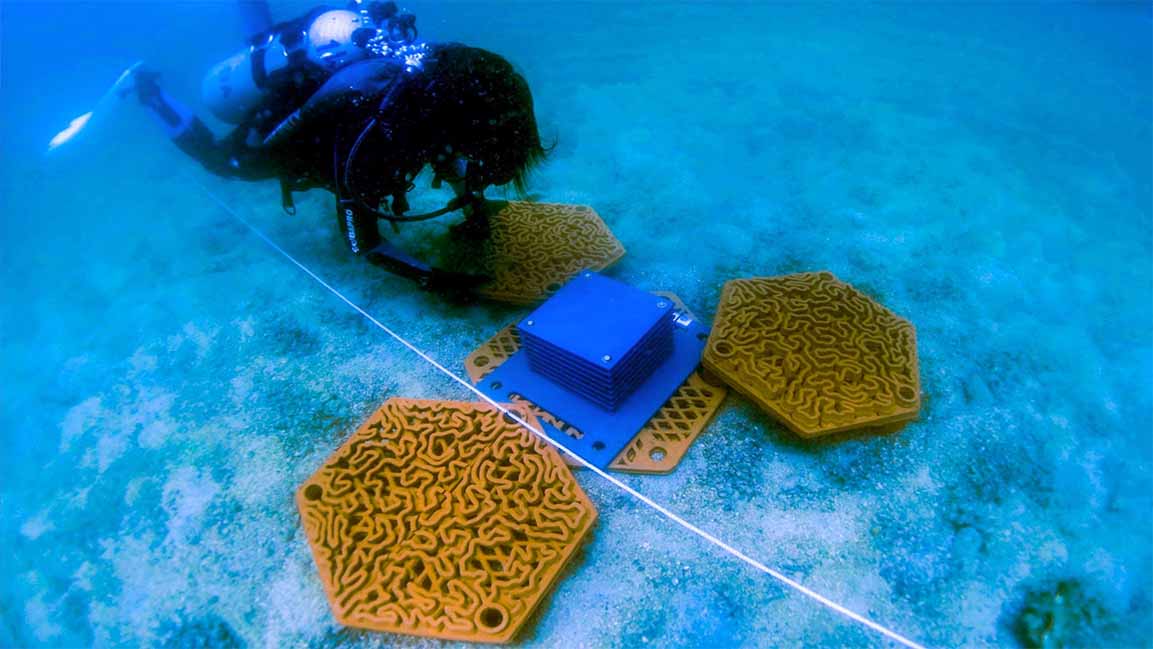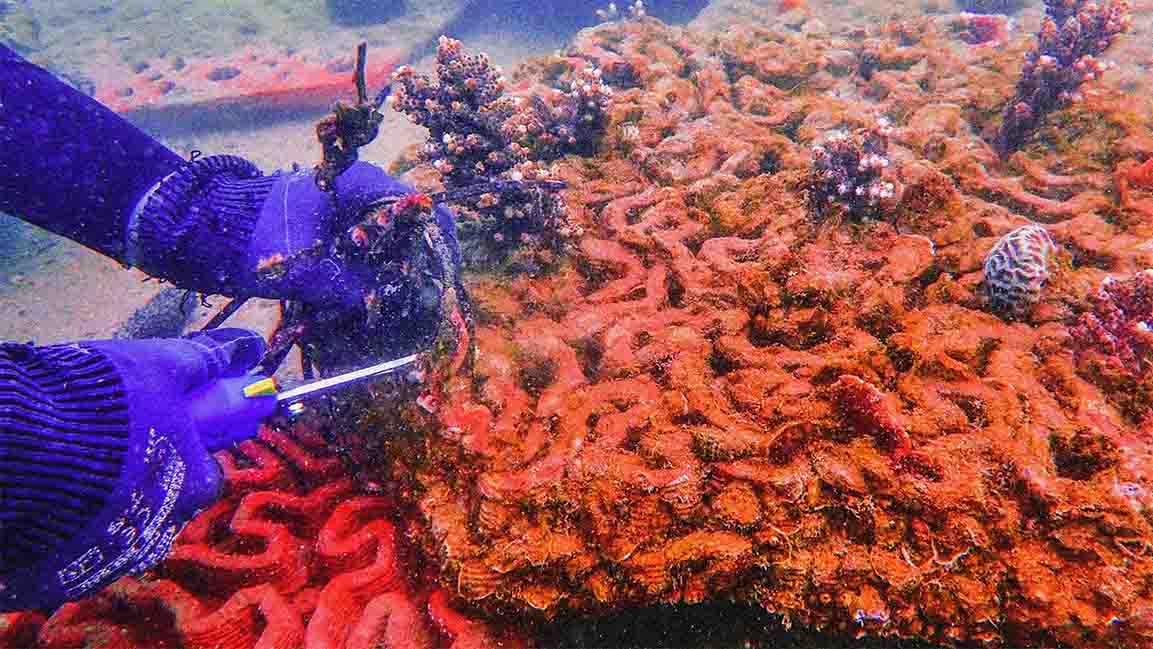- | 9:00 am
These 3D-printed reef tiles double as a home for marine life
Using IoT, AI, and 3D printing technology, this startup is restoring the marine ecosystems of the Arabian Gulf.

Coral reefs are under threat due to climate change. According to WWF, over 50% of the world’s coral reefs have already been lost, and it’s estimated that 90% of reefs will be at risk by 2030.
The urgency of the precarious situation of marine ecosystems led Vriko Yu to launch the climate tech company Archireef in 2014.
“We need to understand the urgency of active restoration; we need solutions that can mitigate climate change and restore biodiversity,” says Yu.
Crucial to the health of marine ecosystems, coral reefs are essential to the livelihoods of millions who rely on them for food, tourism, and protection from natural disasters.
As an expert who has studied marine systems, Yu says the ripple effects of climate change on the reefs include rising ocean temperatures, resulting in coral bleaching. Human activities like overfishing and coastal construction disrupt natural coastal processes and cause sedimentation, destroying reefs.
“All these threats pose a significant challenge to the survival of coral reefs,” Yu says.
Could technology aid in its restoration? Yes.
Archireef designs solutions by combining marine biology, 3D printing, and material science to create artificial habitats for threatened marine environments.
The aim is to deploy reef tiles to restore degraded reefs.
“If big corporations can lay foundations, we can push for the bigger dream like building coral highways and other solutions – so our impact can become more significant,” says Yu.
The secret is in taking it “one tile at a time”.
HOW DOES IT WORK?

Courtesy: Archireef
The hexagonal reef tile, with a diameter of 50 centimeters, allows a single diver to deploy tiles over 40 square meters daily, thus reducing the need for heavy machinery that could harm marine life.
Terracotta clay, a non-toxic material, is used to create these tiles to ensure the pH levels of the ocean are unaffected.
The goal is to be sensitive to marine life while minimizing potential hostile ocean environmental impacts, says Yu.
Overall, the deployment is a collaborative effort but a painstaking task that involves a range of stakeholders, including scientists, and divers.
Design inspiration is crucial to creating any product. “Nature served as the main source of inspiration. Combining art with science, we created a reef tile, using 3D-printing technology allowing us flexibility in design,” says Yu.
Composed of three layers, each reef tile consists of legs allowing for customization of the tile to its location; the base layer prevents the tiles from sinking into the sand, and the third component, a biomimicry layer, inspired by a brain coral called Platygyra, which is one of the most resistant corals in dealing with sedimentation stress.
CORALS OF OPPORTUNITY

Courtesy: Archireef
Deployment involves the identification of coral species that are capable of growth in a specific region. Once this has been locked in, Archireef collects corals of opportunity (COP) – broken off the reef due to wave action or storms – from existing reefs.
These COPs are then cut into five-centimeter-sized fragments and placed on coral propagation units to grow in a safe and conducive environment.
Next is a full site assessment to determine water depth, temperature, salinity, and current patterns.
Yu and her team also assess potential threats like sedimentation, pollution, or fishing activities.
Once the site has been identified, the deployment process begins.
RESTORATION OF THE ARABIAN GULF
To rebuild coral reefs off the coast of the Arabian Gulf, Archireef has planted reef-inspired terracotta plates in a marine protected area near Umm Khorah Island in Al Dhafra Region, Abu Dhabi, in partnership with ADQ, the Environment Agency – Abu Dhabi, and other stakeholders.
Abu Dhabi waters are known to house 34 different types of hard coral. In 2017, the emirate lost 73% of its reefs due to mass coral bleaching caused by increased water temperature.
Archireef’s work started with a deployment process that stretched over five days.
Housing 1,200 coral fragments, the deployment involved a team of scientists and seven divers, who handed reef tiles from the boats to the divers and at the site.
Once that was complete, coral fragments provided by EAD nurseries were out-planted onto the tiles.
With the latest 3D printing, IoT, and AI technologies, coral fragments are closely monitored to ensure they thrive in their new environment.
“Our team of marine scientists also collects data on the biodiversity and abundance of marine organisms in the area to ensure that our deployments are contributing to the overall health of the marine ecosystem,” says Yu.
Technology enables tracking ecological recovery more efficiently at a much higher resolution.
For instance, Yu says the collection of environmental DNA to measure biodiversity is possible with the use of metagenomics. They also deploy computer visions to measure the coral cover and ecological status.
Despite the technological advancements, the most significant pay-off for all the hard work is when nature begins its work. “We have already started to see fish and other marine animals settling in Abu Dhabi’s waters,” says Yu.
In many ways, Archireef sets the building blocks for coral reefs while leaving the rest to nature’s creative genius.






































